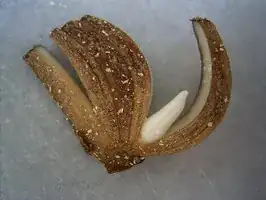One of my amaryllis bulbs is infected with the narcissus bulb fly : ( It was planted and it started seeing white mould forming around the bulb. I took the bulb out and sure enough it was starting to rot on its side. By pressing on the decayed area I found a maggot.
I know most people recommend discarding the bulb, but I rather try to save it. The damage seems to be mostly on the outside layers, since it is a big bulb. I know most likely the mother planted two eggs on the bulb, though, so there might be another maggot eating away the bulb where I can't see it. So my questions are:
- Has anyone actually saved an infected bulb? What method was used?
- If I use the method of soaking the bulb in hot water (43c - 44c) for 40 minutes, do I need to keep the water constantly at that temperature?
- Can I cut the decayed part of the bulb (mostly on its outside) and plant it again? Wouldn't it rot (like it was doing before) not having its protective layers?
- I have seen some people slice the bulb completely to get the worm out but I could not find a description of the whole method. How does this method work? Can I plant the halves afterwards?
Thanks in advance.
